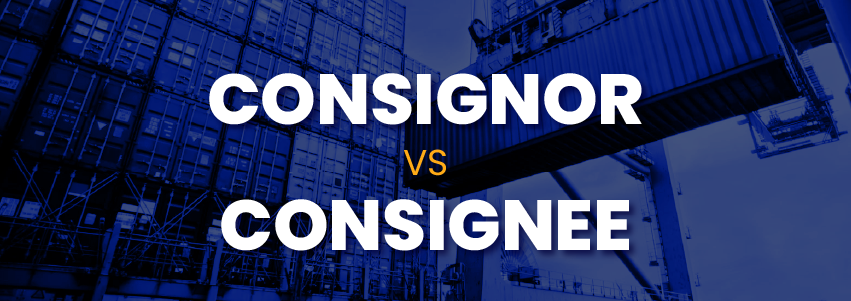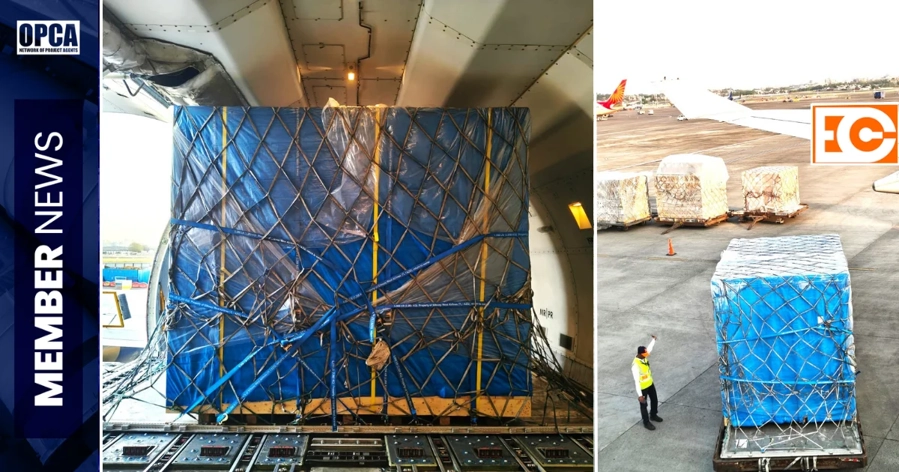What’s the Difference Between a Consignor and a Consignee?
Successful operations in the realm of international shipping, trade, and logistics depend on knowing roles and responsibilities. The terms "consignor" and "consignee" are among the most commonly misunderstood in shipping. Though they might sound similar and appear together in shipping documents, the difference between consignee and consignor is both significant and functional. These terms specify who delivers the items and who gets them; this difference counts in everything from insurance coverage to customs clearance and beyond.
This article will lead you through the exact definitions of each job, investigate the consignee vs consignor relationship, and clear up closely connected words, including the difference between consignee and buyer, consignee vs shipper, and the consignee-buyer difference. This guide is meant to clear uncertainty and guarantee that all shipping roles are precisely defined, regardless of your level of knowledge about logistics or your need to improve.
Who is Consignor and Consignee?
Two often used words in international shipping and logistics are consignor and consignee. For companies engaged in worldwide trade, knowing the difference between consignee and consignor is essential since both positions hold different duties directly influencing the shipping process. Though in reality the definitions are obvious and should be followed in documentation and operational processes, many misinterpret the positions or believe they are interchangeable.
Whether you're new to the logistics sector or refining your knowledge as a shipping specialist, understanding the main differences between consignee vs consignor will help prevent expensive mistakes, delays, and legal issues. Most transportation records, including the bill of lading, have these roles, which identify who delivers the goods and who gets them.
What is Consignee?
A consignee is the person or company that gets the items being sent. Usually, the consignee—that is, the buyer or final recipient of the goods—is named on the bill of lading; the consignee is the person authorized to accept the shipment at its destination. It’s important to note that the consignee is not always the same as the buyer, which brings us to the difference between consignee and buyer.
Particularly in overseas shipments, many logistics situations involve a consignee vs buyer relationship variation. The buyer might be a trading corporation that bought the items, for example, whereas the consignee might be a customs broker or freight forwarder assigned to accept and clear the cargo. This difference highlights how important the consignee is practically in the import clearance and physical delivery procedures.
Under a basic shipping arrangement, the consignee takes over the goods upon arrival. Usually, they also handle import taxes, taxes, and final delivery schedules. This implies that the consignee operates as the primary figure in the destination country or port independent of who owns the goods.
In complex supply chains where documentation and legal obligations are distributed among several companies, the consignee vs buyer comparison becomes increasingly pertinent. Since it directly influences who should be contacted, billed, and approved to handle the delivery of goods, many logistics experts frequently seek clarification on the consignee-buyer difference.
What is Consignor?
A consignor is the person or company forwarding the items. Initiating the shipment, packing the goods, planning transportation, and producing shipping documentation, including the bill of lading or air waybill, fall to them. Usually, the consignor—that is, the items' exporter or seller—is the other way around.
People frequently look up consignee vs consignor meaning to understand the distinction between the sender and the receiver in a shipping transaction. The consignor guarantees that the cargo is correctly sent over to the shipping line, goods forwarder, or logistics organization that will handle it; she is the starting point in the supply chain.
Consignors are occasionally referred to in shipping records as the "shipper." This might cause uncertainty, particularly when contrasting consignee vs shipper roles. Despite the frequent use of "shipper" and "consignor" interchangeably, context is crucial. Under some shipping agreements, for example, a shipper could be a third party—such as a freight forwarder—acting on behalf of the consignor. Typically, the consignor is the individual who arranges and authorizes the shipment from the origin.
Assignment of responsibility, including accountability, insurance coverage, and compliance with international trade rules, depends on an awareness of the difference between consignee and consignor.
Consignor vs. Consignee: What's the Difference?
The discussion of consignor vs. consignee: what's the difference? is more than just academic. Actually, mislabeling these responsibilities in documentation might cause customs problems, insurance conflicts, or even product seizure.
The difference between consignee and consignor is primarily in their duties along the shipping process. The consignee gets it; the consignor starts the shipping. Usually, the consignee is in the importing country while the consignor is in the exporting one.
In consignee vs consignor in shipping, their duties are distinct. The consignor is responsible for making sure the items are correctly packed and getting them turned over to the carrier. Conversely, the consignee is in charge of arranging customs clearance, making sure the cargo gets to its ultimate destination, and picking up the items at the site.
These definitions sound simple, yet in the real world, complexity results. In letter of credit transactions, for example, the consignee could be a designated bank or agent rather than the buyer. This scenario emphasizes the relevance of the difference between consignee and buyer and why it's vital to distinguish between who purchases the goods and who physically receives them.
When considering consignee vs shipper, it's important to understand that, usually the same as the consignor, the shipper is the person or business who plans for the items to be carried. In situations involving a commodities forwarder, nevertheless, the shipper might not be the real owner or sender of the goods. Therefore, knowing consignee vs consignor in shipping becomes essential for knowledge of logistics.
Sometimes, businesses face confusion between consignee vs buyer, especially when goods are shipped to a warehouse or distribution center rather than directly to the buyer. Here, the consignee buyer difference lies in the contractual versus logistical responsibilities. The buyer holds ownership and pays for the goods, while the consignee may be merely tasked with accepting delivery.
This complexity is why logistics experts often emphasize the consignee vs consignor roles in training sessions, documentation checks, and freight planning. Clear definition of these roles is essential to ensure that items are delivered to the correct party or customs clearance delays.
OPCA Shipping Directory for Trusted Global Shipping Contacts
Access to verified, professional contacts is absolutely vital for exporters, freight forwarders, and importers negotiating the worldwide shipping scene. Here is where OPCA (Overseas Project Cargo Association) finds application.
The shipping directory offered by OPCA is an invaluable resource that lists trusted members around the world. Whether you are a consignor looking to partner with reliable consignees or a consignee seeking a dependable consignor or shipper to manage complex shipments, this directory allows you to connect with vetted logistics professionals.
When handling out-of-gauge, heavy-lift, or project cargo where clear definitions of responsibilities like consignee vs consignor are not merely procedural but also absolutely vital for operational success, the OPCA shipping directory is very helpful. Using the directory helps companies lower risks and guarantee that everyone engaged in a transaction properly knows their obligations.
When handling high-value goods, time-sensitive shipments, or multimodal transportation paths, the clarity around terminology like consignee vs consignor meaning or the difference between consignee and consignor becomes very important. Apart from giving access to reliable partners, the OPCA network encourages best practices in identifying and carrying out responsibilities like consignee vs consignor in shipping activities.
Ultimately, the difference between consignee and buyer, consignee buyer difference, and consignee vs shipper distinctions are better managed when all participants are aligned and verified — something the OPCA directory facilitates with ease.
_logo.webp)



